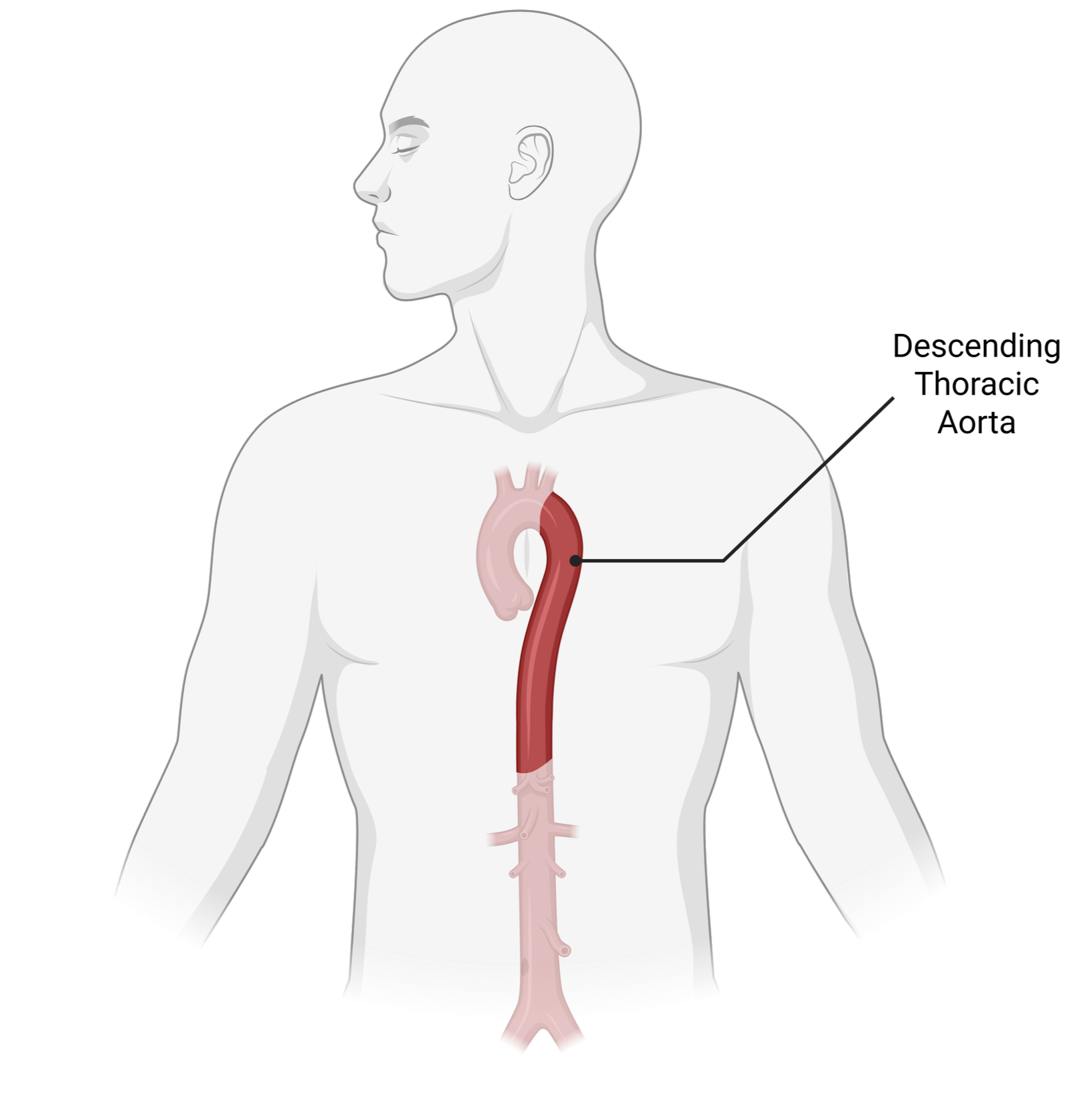Descending Thoracic Aorta
Overview
The descending thoracic aorta is not just a simple tube, it’s a lifeline that extends from the end of the aortic arch and travels down through your chest. This sturdy vessel is responsible for carrying oxygen-rich blood to essential organs and tissues, helping keep your body healthy and strong every second of every day.
As the aorta moves through the chest, it is carefully positioned near your spine. Its thick, elastic walls are built to handle the constant force of blood rushing out from the heart. Branches sprout from the descending thoracic aorta to supply the chest wall, lungs, esophagus, spinal cord, and other key structures, making this section a vital highway for your entire upper body.
Structure and Function
The descending thoracic aorta begins just after the arch and passes behind the heart and lungs, reaching as far down as the diaphragm—the muscle separating your chest from your abdomen. It measures about 2.0–3.0 cm across in most adults, but this size can vary depending on your age, body type, and health. Its location and size help it function as a central artery, sending branches to nourish nearly every tissue in the chest area.
When the Descending Thoracic Aorta Gets Sick
Problems in the descending thoracic aorta are rare but can be serious. If the wall weakens with age, high blood pressure, or disease like atherosclerosis, conditions such as aneurysm (ballooning), dissection (tearing), or trauma can occur. Many genetic conditions and inflammatory diseases can also affect this part of the aorta, potentially increasing the risk for life-threatening events.
Each of these diseases is explained in more detail in other chapters on this website. Knowing what the descending thoracic aorta does, and how it supports your body, helps you understand why protecting it, with healthy habits, regular checkups, or sometimes medical treatment, is so important.
Aneurysm (Ballooning) of the Aorta


